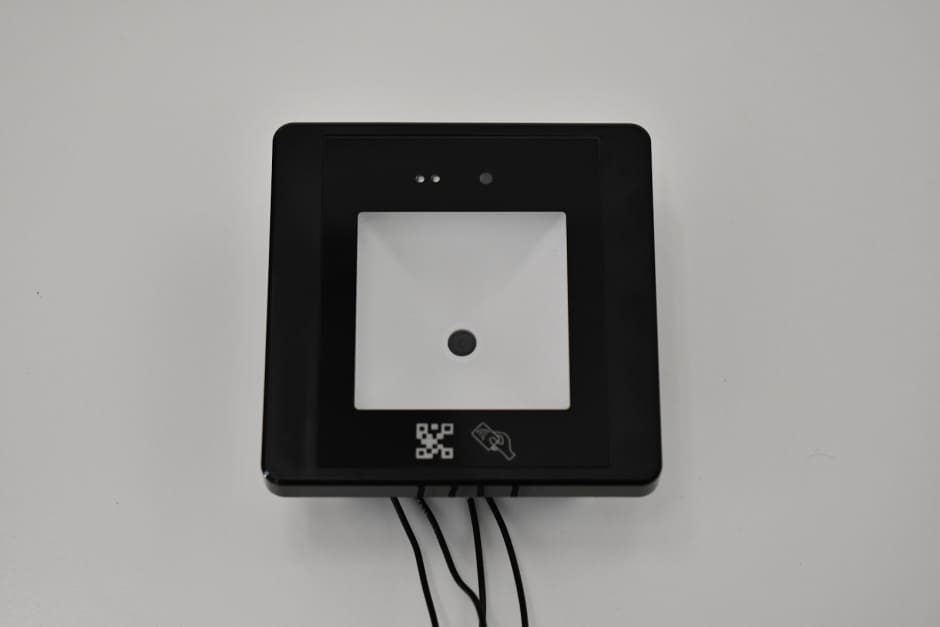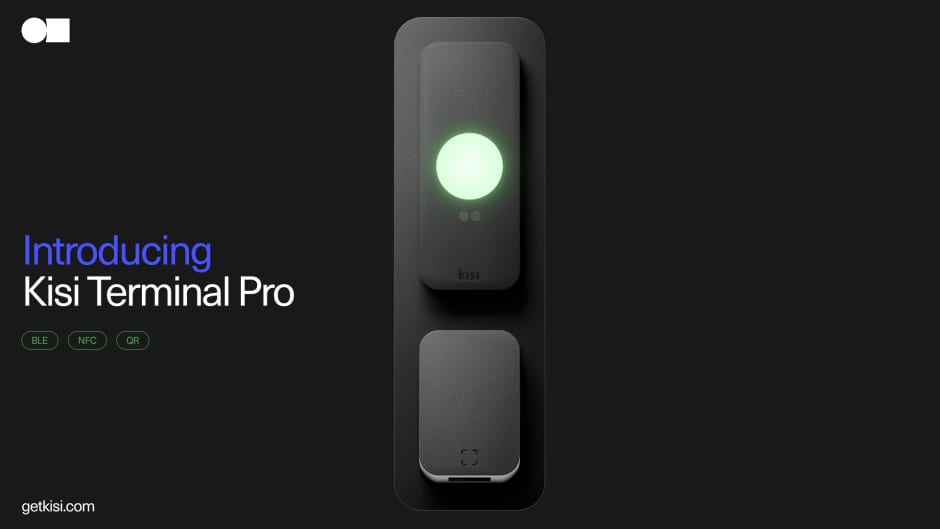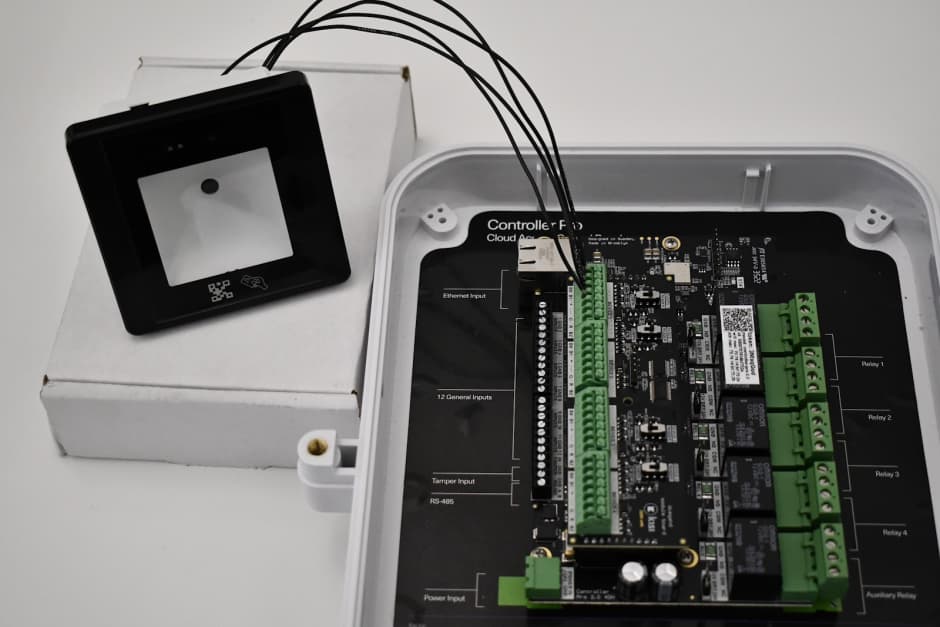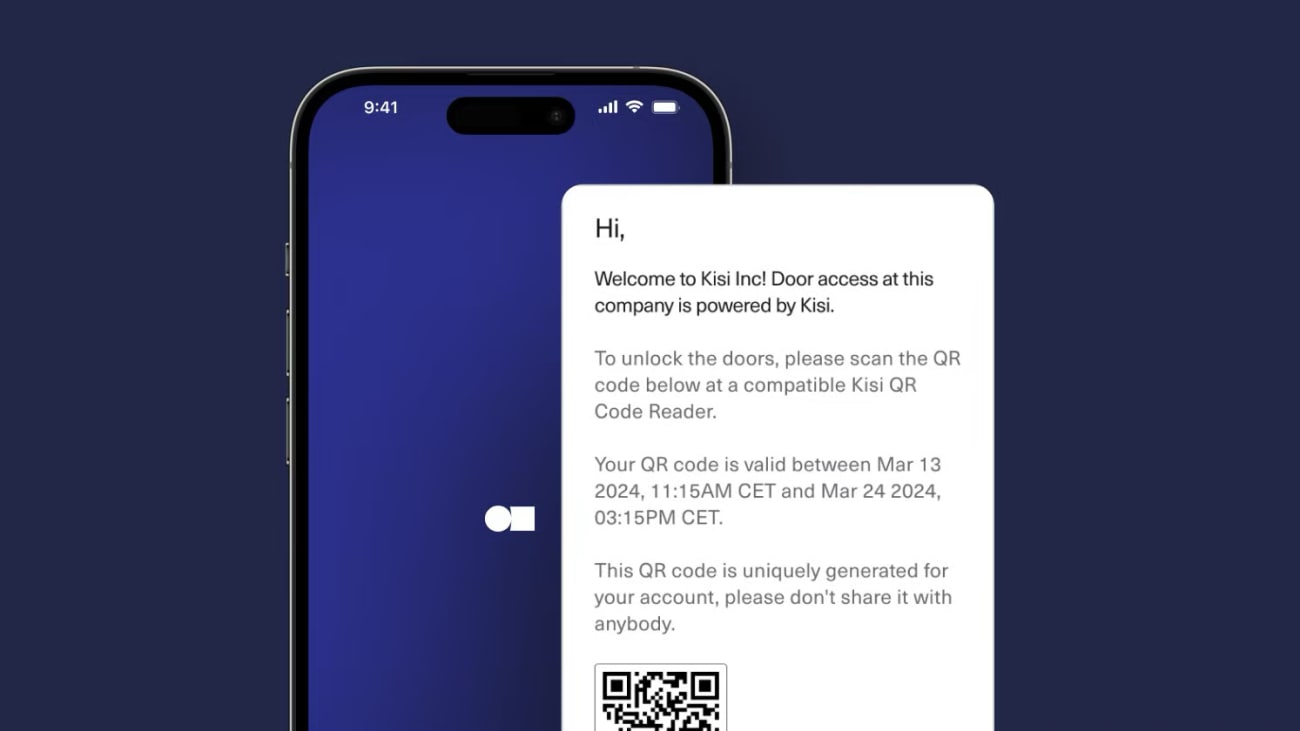QR code entry systems are a growing access control method businesses are using, no matter their size, purpose, or industry. The cost-efficiency of QR codes makes them a simple and effective security tool for every business. They are very easy to use, as all you need is your mobile phone or access card with the QR code and the QR code reader.
What are QR code access control systems? #
Access control systems come in many shapes and forms, including plastic ID cards, biometric scans, security codes, and mantraps. QR code access control systems are simple, quick, and accurate - making them one of the more efficient systems to use.
By scanning a QR code, certain resources are made available within the office space. These codes help regulate visitors and keep track of what resources are being used within the facility.
Additionally, these codes can also be used for QR building access. They are able to link up with gates and doors to determine which QR code holders can enter facilities. This is particularly helpful in restricting visitors to certain areas of a building. QR building access can help in maintaining the order and flow within a workspace.
How do QR codes work with access control systems? #
Access control systems operate with a QR code reader. After receiving a QR code, you can scan it on the reader, and it will grant you access to the building or certain resources.

After scanning the QR code, the reader sends the unique data captured in the code to the service provider. If the data in the code links up with the QR code reader’s data, it grants access to the individual who scanned the code.
This allows for a more secure and controlled environment, as building access is only granted when the security precautions are met by the service provider.
QR code door access with Kisi #
Using QR code door readers, you can create QR codes that represent Kisi credentials. You can then unlock doors by scanning this code, allowing for many unique use cases, expanding the range of the Kisi system.
Why integrate QR access control with Kisi? #
QR access is great for visitors, given that QR codes can be easily sent via email or printed out, and it can work offline. Expanding the access methods, Kisi’s Terminal Pro also includes a QR code reader. The QR access addition enables you to:
- Easily generate QR codes and send them by email or print them.
- Swiftly manage visitor access without them having to download the Kisi app or you having to set up access links.
- Set a time and space limit or deactivate the QR code at any time.
Ways to use QR access control with Kisi #
Terminal Pro
If you’re looking for an all-in-one access solution that also supports QR door entry, the Terminal Pro is the most efficient, easy-to-deploy reader on the market. It provides seamless unlock and check-in methods to ensure frictionless entry while reducing operational overhead. It covers a variety of access methods, including mobile and contactless unlocks, badges, QR codes, and even employee badges in Apple Wallet.

Why choose the Terminal Pro for QR access:
- Seamless employee and visitor experience: The Terminal Pro offers ultimate flexibility by enabling multiple unlock methods and accommodating diverse access control scenarios.
- Easy to deploy and operate: The system is scalable, allowing easy deployment, expansion, or modification of access capabilities without major infrastructure changes.
- Reduce overhead: This QR code system streamlines administrative tasks like access provisioning, management, and revocation, minimizing manual efforts and operational costs.
Third-party QR reader with Kisi installation
If you’re only looking to enable QR code access, you can connect a third-party QR reader with Kisi. Watch the dedicated episode of Kisi unlocked for more details or follow the installation steps below the video.
Be sure to unplug the controller before wiring anything. For this installation, you’ll need:
- Kisi Controller Pro 2
- Kisi Wiegand board
- QR code scanner (Wiegand-compatible)
- Small flathead screwdriver
Hardware setup
- Ensure the controller is unplugged.
- Attach the Wiegand board to the controller.
- Wire the QR scanner to the Wiegand board, connecting the D0, D1, +/12V, and -/GND ports.
- Ensure that the switch on the Wiegand board where you have connected the scanner is set to ‘Reader’.

When finished, it should look similar to the pictures below.


Software setup
- Go to web.kisi.io.
- Click on ‘Places’ and select your place.
- Click on ‘Hardware’, ‘Controllers’, and select your controller.
- Scroll down and choose the Wiegand channel that corresponds to the QR code scanner that has been connected to the system.
- Click on ‘Type’ and select ‘Legacy Reader’.
- Click on ‘Search door or elevator’ and enter the door to unlock with the QR code scanner.
- Click on ‘Save’.
Creating a QR code
- Go to web.kisi.io.
- Click on ‘Credentials’, ‘Add credential’, ‘Single credential’.
- Click on ‘Card type’ and select EM410x 32-bit.
- Click on ‘Card ID’ and enter a number between 0 and 4,294,967,295. Remember this number.
- Click on ‘Assign to user’ and type the user email address you would like to assign to. Tip: If you want to use the QR code as a generic guest pass, you can create a fake user beforehand and assign this credential to this fake user.
- Click on ‘Add’.
- Click on the card previously created.
- Click on ‘Activate’.
- Now simply go to a QR code generator.
- Enter the Card ID you previously selected as raw data, and generate your QR code.
- The door will now unlock when you present that code to the scanner.
Tip: A smaller QR code is easier for the scanner to read.
What are the advantages and disadvantages of a QR code door entry system? #
QR code access control systems are cost-effective to install as well as to maintain. The minimal use of devices makes it not only more cost-efficient but lessens its carbon footprint as there is no need to print lots of plastic cards for each employee, as done traditionally with the identification card access control systems.
In addition to this, it works quickly and accurately, allowing your business more control over the flow of people. People can be restricted to certain areas of the building, allowing more order over your space.
Moreover, because it’s done through mobile devices, the system is on hand and easy to use. What makes the Terminal Pro the QR access solution of choice for many modern companies is its expanded capabilities combined with convenience, flexibility, and security. Contact our team to find out the right QR solution for your business.
However, there are still some disadvantages to relying on a third-party QR reader for all access management. Since the QR code is often not registered to a specific person, people can send or share the code, which limits its security. Additionally, if the business does not regularly monitor their QR codes, it is easy for hackers to replace the code with QR codes that are encrypted with viruses.
Entry systems with QR codes can help you manage large groups of visitors who visit your building and need rapid onboarding. By regularly updating and monitoring QR codes and access control systems, your organization can ensure a safe and efficient environment for all the employees and visitors.


